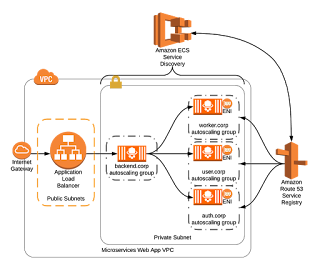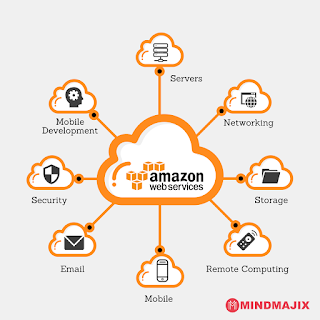Amazon Web Services
AWS On-Demand Instance:
AWS On-Demand Instance (Amazon Web Services
On-Demand Instances) are virtual servers that run in AWS Elastic Compute
Cloud(EC2) or AWS Relational Data base Service (RDS) and are purchased at a
fixed rate per hour. AWS recommends using On-Demand Instance for application
with short-term, irregular workloads that cannot be episodic. They are also
suitable for use during testing and maturity of applications on EC2.
AWS ec2 Instance are designed for different
tasks within the cloud. On-Demand Instances have no bond pledge AWS EC2 Instance are presented in a variety of different levels
of compute power and and can be launched as needed -- except potentially during
periods of very high compute demand in particular availability zones. This is usually
the most classy purchasing option for AWS instances, though exact hourly prices
vary depending on the operating system and size of the instance. Each On-Demand
Instance is billed per instance hour from time it is launched until it is finished
or stopped. Partial instance hours are rounded up to the full hour upon
billing. A free tier of usage is also available.
Spot Instances:
A Spot Instance is anunused EC2 instance that is available for less than the On-Demand price.Because Spot Instances enable you to request unused EC2 instances at steepdiscounts, you can lower your Amazon EC2 costs significantly. The hourly price
for a Spot Instance is called a Spot price. The Spot price of each instance
type in each Availability Zone is set by Amazon EC2, and adjusted gradually based
on the long-term supply of and demand for Spot Instances. Your Spot Instance
runs whenever capacity is available and the maximum price per hour for your
request exceeds the Spot price.
Spot
Instances are a cost-effective choice if you can be flexible about when your
applications run and if your applications can be interrupted. For example, Spot
Instances are well-suited for data analysis, batch jobs, background processing,
and optional tasks.
Another strategy is to launch Spot Instances
with a specified duration (also known as Spot blocks), which are designed not
to be interrupted and will run continuously for the duration you select. In
rare situations, Spot blocks may be interrupted due to Amazon EC2 capacity
needs. In these cases, we provide a two-minute warning before we terminate an
instance, and you are not charged for the terminated instances even if you used
them.
Reserved Instances:
The
following diagram shows a basic overview of purchasing and using Reserved
Instances.
In this scenario, you have a running On-Demand
Instance (T2) in your account, for which you're currently paying On-Demand
rates. You purchase a Reserved Instance that matches the attributes of your
running instance, and the billing benefit is immediately applied. Next, you
purchase a Reserved Instance for a C4 instance. You do not have any running
instances in your account that match the attributes of this Reserved Instance.
In the final step, you launch an instance that matches the attributes of the C4
Reserved Instance, and the billing benefit is immediately applied.
Scheduled Instance:
Scheduled Reserved
Instances (Scheduled Instances) allow you to purchase faculty reservations that
recur on a daily, weekly, or monthly basis, with a particular start time and length,
for a one-year term. You reserve the capacity in advance, so that you know it
is available when you need it. You pay for the time that the instances are
scheduled, even if you do not use them.
How to scheduled instances:
Amazon EC2 sets aside pools
of EC2 instances in each Availability Zone for use as Scheduled Instances. Each
pool supports a specific combination of instance type, operating system, and
network.
To
get started, you must search for an available schedule. You can search across
multiple pools or a single pool. After you locate a suitable schedule, purchase
it.
You
must launch your Scheduled Instances during their scheduled time periods, using
a launch configuration that matches the following attributes of the schedule
that you purchased: instance type, Availability Zone, network, and platform. what
time you do so, Amazon EC2 launches EC2 instances on your behalf, based on the
specified launch specification. Amazon EC2 must ensure that the EC2 instances
have ended by the end of the current scheduled time period so that the capacity
is available for any other Scheduled Instances it is set aside for. Therefore,
Amazon EC2 terminates the EC2 instances three minutes before the end of the
current scheduled time period.






Comments
Post a Comment